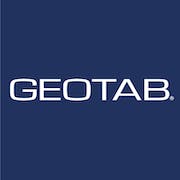Looking for the best fleet maintenance software? Our comprehensive buyer's guide has got you covered. Find your perfect fit today!
Effective management of a fleet of vehicles can be a daunting task, but with the right tools and systems in place, it can be executed with ease. One major tool that every fleet manager should invest in is a fleet maintenance software. Such a tool streamlines operations and ensures that every vehicle under your management is operating efficiently, safely, and at its optimal performance level. As the popularity of this technology continues to grow, the number of options in the market also increases. Hence, it becomes essential to choose the best system that suits your company's needs and budget. In this buyer's guide, we will help you navigate this world by providing you with the essential information and factors to consider when making this critical decision.
What is fleet maintenance software?
This is a management tool that helps fleet owners and managers to keep track of their fleet's maintenance needs and schedules. It is a valuable tool that has become increasingly popular among transportation companies around the world. It provides a single platform to manage all aspects of fleet maintenance, including vehicle maintenance, repair, inspection, and fuel management.
This solution has many use cases that enable transportation companies to streamline their operations and optimize their resources. Here are some of the common ones:
- Preventive maintenance scheduling: Fleet maintenance software allows companies to schedule regular maintenance procedures, such as oil changes, brake pad replacements, and tire rotations, to ensure that vehicles are kept in top working condition. It ensures that preventive maintenance is performed on a regular basis, reducing the likelihood of costly breakdowns and repairs.
- Repairs and maintenance tracking: It tracks all repairs and maintenance operations performed on fleet vehicles, including the cost of each procedure, parts used, and labor hours. This data is used to optimize repair and maintenance processes, reduce costs, and improve vehicle uptime.
- Parts and inventory management: It also tracks parts inventory levels, providing visibility into parts availability and helping companies to optimize parts and inventory management, reducing the risk of stock shortages and overspending.
- Fuel management: The software monitors fuel consumption, identifies fuel usage patterns, and identifies vehicles with high fuel consumption, enabling fleet managers to optimize routes, reduce fuel costs, and identify potential maintenance issues.
This fleet technology is popular among transportation companies of all sizes and sectors, including trucking, delivery, construction, and municipal fleets. Companies that rely on a fleet of vehicles to operate their business can benefit from it, reducing costs, and improving operational efficiency.
What are the advantages of having a fleet maintenance solution?
This essential tool is for businesses that operate vehicles as part of their daily operations. Proper fleet management is crucial in maintaining efficiency, reducing downtime, and increasing productivity, which ultimately leads to better profits. By combining and analyzing data points into personalized, actionable insights, fleet managers are benefited with taking the guesswork out of fleet maintenance, and decreasing vehicle downtime by up to 25%. Here are its top benefits:
- Preventive maintenance scheduling: A fleet maintenance tool can help businesses schedule maintenance processes before an actionable problem occurs hence avoiding vehicle breakdowns.
- Cost reduction: This program helps businesses reduce costs by reducing downtime through regular scheduling of maintenance checks. It also helps businesses save money by prolonging vehicle lifespans through timely maintenance.
- Improve safety: It can help ensure that all vehicles are well-maintained and meet safety standards, which in turn increases safety for drivers and other road users.
- Increase efficiency: It also streamlines important fleet management tasks like scheduling maintenance, tracking fuel usage and driver timesheets, providing businesses with an overview of their fleet.
- Enhanced fleet visibility: Fleet maintenance technology allows businesses to monitor their fleet in real-time and track usage and performance metrics in-depth. This can help businesses optimize their fleet to lower operational and maintenance costs.
Investing in fleet maintenance software is, therefore, a smart move for any business that wants to improve its fleet performance, streamline operations, and reduce costs.
10 key features of fleet maintenance software
Fleet maintenance software helps fleet managers to simplify operations, achieve compliance with regulations, and reduce maintenance costs. Here are 10 of its common features to consider when choosing the right one for your business.
Firstly, digital storage and reporting allows you to store and access data electronically, eliminating the need for paper-based systems which are vulnerable to human error. Secondly, cost tracking enables you to monitor maintenance expenses, fuel expenditures, and any other costs associated with fleet operations.
Fuel management is the third feature that helps to optimize fuel usage and reduce fuel consumption. Fourthly, mileage tracking keeps track of the distance your fleet vehicles cover to enable you to schedule maintenance and replacements.
The fifth essential feature is maintenance scheduling which reminds fleet managers of the various maintenance procedures required at set intervals. Parts management function helps fleets to manage their inventory by keeping stock of parts available for repairs.
The seventh tool is the predictive maintenance uses AI technology to predict when maintenance is needed before failure, saving the fleet manager from unforeseen downtime and repairs. A study conducted by Virginia State and Virginia Tech universities found that repair costs are 25% cheaper for fleets that perform routine maintenance. Real-time fleet vehicle tracking allows you to monitor vehicle locations, speed, and routes.
With alerts and notifications feature you are able to send automated messages of important fleet information to fleet managers, maintenance teams, and drivers. Lastly, a custom reporting tool enables you to customize reports based on your fleet’s needs and scenarios. By selecting fleet maintenance software with these features, you can achieve significant savings and efficiencies for your fleet.
What should you consider before purchasing a fleet maintenance tool?
Choosing the right fleet maintenance software can be overwhelming due to numerous factors to consider. To simplify the decision-making process, we've compiled a list of key factors to keep in mind:
1. Cost: While cost isn't the only factor to consider, it's definitely an important one. Look for one that fits within your budget, but keep in mind that the cheapest option may not always be the best long term investment.
2. Scalability: Consider your business's growth trajectory when choosing a fleet maintenance application. Make sure the system can grow with your business and accommodate changes in the size of your fleet.
3. Features and functionality: Look for a solution that offers all the features and functionality your business requires. Consider what tasks you need the tool to perform (such as vehicle tracking, work order creation, and parts management) and make sure it can handle all your needs.
4. User-friendliness: The best solution is one that your employees will actually use. Choose one that is user-friendly and easy to learn, to avoid any hiccups during the implementation process.
5. Integration: Make sure the system you choose integrates well with your existing systems, such as accounting software or ERP systems. Integration makes the entire maintenance process more efficient and can save your business a lot of time and money.
6. Customer service and support: Good customer service is key when making a purchase like this. Make sure the vendor you choose offers good customer support and is responsive to your business's needs.
7. Security: With any software purchase, security is a major concern. Look for one that offers robust security features to ensure your business's data is safe.
8. Customization: Every fleet is unique, so make sure the program you choose can be customized to fit your business's specific needs.
Market trends for fleet maintenance software
Fleet maintenance software (FMS) continues to be a key tool for companies looking to keep their vehicles roadworthy and on-the-go. With the challenges of 2024 and beyond, a wide range of FMS providers are stepping up to offer innovative solutions to help fleets save on costs.
From predictive maintenance powered by machine learning to solutions that can integrate with other warehouse systems, FMS providers are evolving to meet the needs of their clients. Other trends on the rise include mobile FMS apps that allow for easier monitoring and maintenance of vehicles on-the-go, as well as cloud-based FMS that enable real-time tracking and analysis. It's clear that with the challenges facing fleets today, this technology is more important than ever in keeping vehicles on the road and on the move.
Conclusion
Selecting the right fleet maintenance software is essential for enhancing efficiency, safety, and profitability in your operations. Consider your organization’s specific needs and evaluate several features to find a solution that meets current and future requirements. Involve stakeholders, gather end-user feedback, and utilize trial periods to ensure the application meets real-world needs. With the right tools, you can optimize fleet performance and achieve stable






